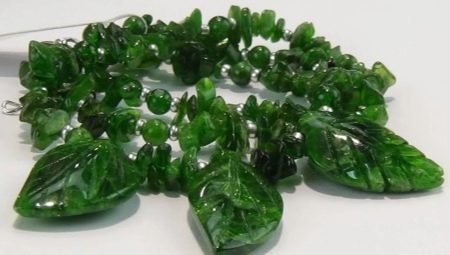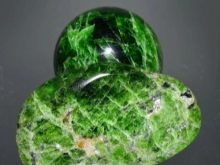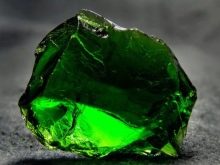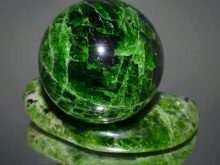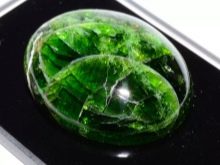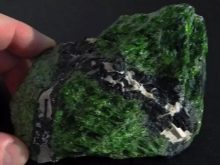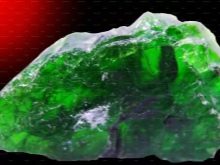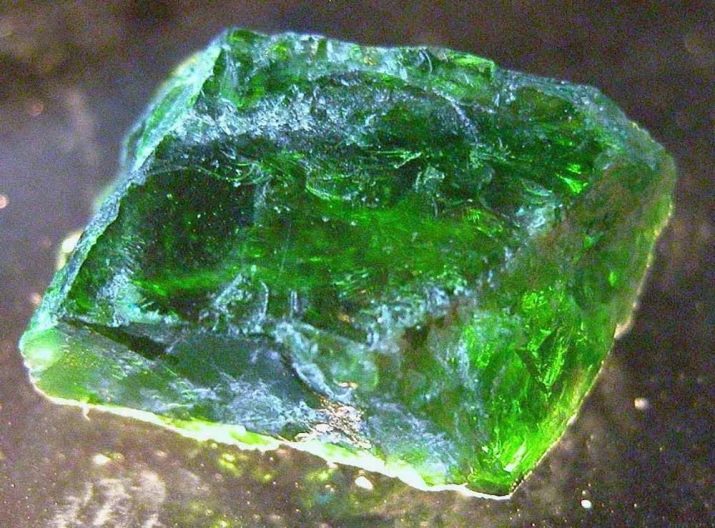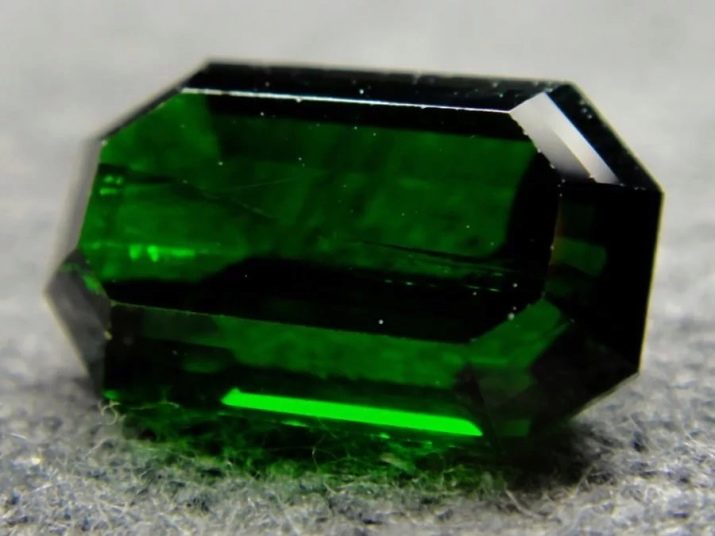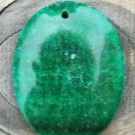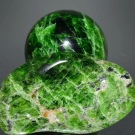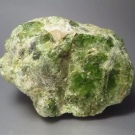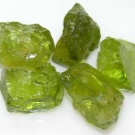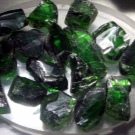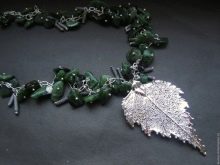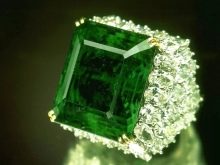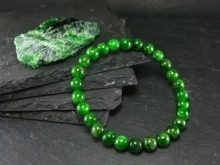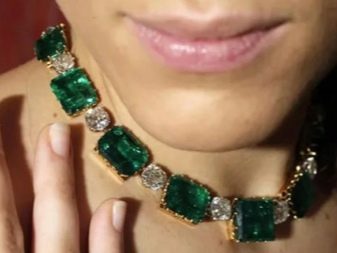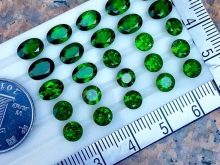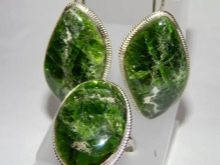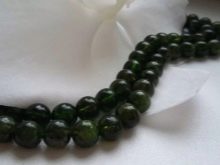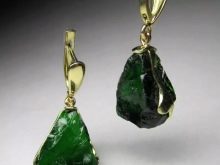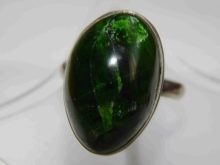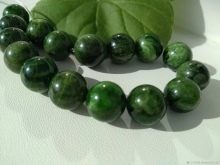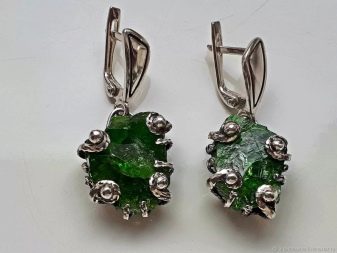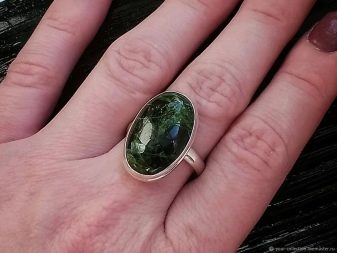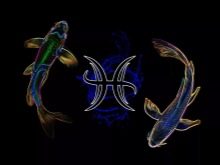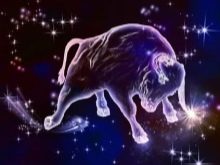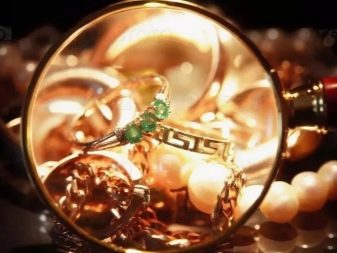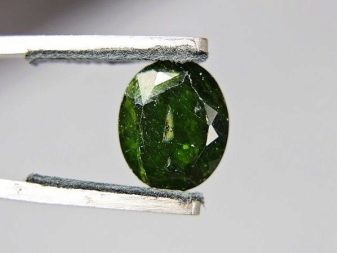Among the many gems that are in high and steadily growing demand, chrome-diopside holds its own, quite prominently. One of the main advantages of the mineral in question is the impressive similarity with emerald, which most of its varieties can boast. No less remarkable are the healing and magical properties of this stone: they justify its regular use, and therefore their description should be given special attention.
Description
At first, chrome-diopside was classified by experts as a rock-forming mineral, and therefore it was not considered as a valuable mineral. It began to be considered a jewel stone only since the late 1980s, which was the result of many years of work by geologist Anatoly Korchagin, the discoverer of the Inaglinskoye field located in Yakutia. Thanks to the latter, chrome-diopside has received 3 more names - sibirlit, inaglit and Siberian emerald.
At present, the mineral in question is classified as a gemstone of the second category of value. In addition to Siberia, it is mined in many other regions of the world, the list of which is as follows:
- East Asia (Japan and China);
- Australia;
- South Asia (primarily Myanmar);
- Africa (South Africa, Madagascar and Tanzania);
- North America (Canada and USA);
- Europe (the most famous deposits in Finland);
- South America (Brazil).
Despite the fairly widespread distribution of the mineral, its reserves are relatively small. Another negative point is the low quality of most mined stones, which significantly reduces the percentage of raw materials used in jewelry. As for the richest cluster of Siberian emeralds, this is the above-mentioned Inaglinskoye deposit, named after the eponymous river. Its shores are famous for placers of chrome diopsids, among which there are a significant number of valuable specimens.
Special attention should be paid to the physical properties of the described mineral belonging to the group of silicates. One of the most remarkable features of Siberian emerald is the ability to change color depending on the angle of inclination, due to the layered arrangement of its components.
This feature is characteristic of all varieties of diopside - a stone whose name translates as "having a double appearance." The spectacular green color of the mineral in question, due to the chromium oxide content (0.2–3.5%), is also worth mentioning.
Other features of Siberian Emerald are listed below:
- pronounced glass shine;
- transparency or translucency;
- relative fragility (Mohs hardness is 5.5-6.0, which is comparable with lapis lazuli, hematite and opal);
- density - from 3.25 to 3.55 g / cm³;
- ability to fluorescence under the influence of UV rays.
In addition, chrome-diopside perfectly reflects light — better than emerald and many other gems.
Varieties and composition
Depending on the level of chromium and some other impurities, determined by the specifics of the field, The presented mineral can have the following coloring options:
- rich green;
- pale pistachio;
- grassy;
- brownish green;
- yellowish;
- dark green (close to black).
The list of the main components that make up the Siberian emerald is as follows:
- calcium and magnesium compounds (18-25% each);
- silicon oxide (up to 55%);
- impurities (especially chromium).
In addition, the mineral in question may contain an insignificant amount of vanadium, manganese, iron, titanium and some other components.
As for the cost of chromdimpsids, it is determined by the size of the stones and the degree of their transparency. The price of high-quality Siberian emeralds can go up to several dozen or even hundreds of USD per 1 gram, and such specimens abroad are several times more expensive than in Russia.
Properties and Value
In addition to the spectacular appearance, the described mineral boasts other, no less remarkable features, and in the first place - magical. Those, according to most esotericists, are the following of his properties.
- The ability to change life for the better. If a person seeks to improve his being, it makes sense to become the owner of the considered gemstone. Supporters of the mystical teachings explain this by believing that this gem fell from the tree of life in order to help people who chose it.
- Effective struggle with nightmares. If a person suffers from bad dreams, he should put chrome-diopside on his forehead to get rid of them.
- Increased resistance to stress. Choosing a Siberian emerald as a talisman, anyone can avoid most of the conflict situations, and the rest - to endure with maximum calm.
Using
Chromdiopside is of no less importance in lithotherapy. Stone treatment specialists note that it has a number of useful properties, the main of which are the following.
- Normalization of the nervous system. First of all, the Siberian emerald stabilizes the emotional background and effectively fights depressive states.
- Getting rid of insomnia. According to the lithotherapists, to solve this problem, a daily application of a stone to the forehead is sufficient for 15 minutes.
- Effective resistance to problems of the organs of the cardiovascular system. Proponents of lithotherapy claim that regular wearing of items decorated with chrome-diopside contributes to the normalization of blood pressure and helps get rid of angina, arrhythmias and most of the associated pathologies.
In addition, depending on the used frame, the Siberian emerald can be successfully used to treat the organs of the gastrointestinal tract and the respiratory system. In the first case, the golden frame of the stone is imperative, and in the second - silver.
Given the fragility of chrome-diopside, its processing is associated with certain difficulties. One awkward movement of the cutter can result in damage to the product, and therefore only experienced specialists can work with the Siberian emerald. As for the maximum mass of stones used in jewelry, it is 5 carats (in most cases this value does not exceed 2 carats).
Due to its excellent appearance, chrome-diopside is increasingly found on the shelves of jewelry stores. Taking into account the relatively low cost of the stone in question, not only rich collectors, but also ordinary connoisseurs of beauty and style can acquire it. In most cases, customers prefer the emerald stepped facet of chrome-diopside, recommended by most jewelers.
As a rule, transparent specimens are used to create prestigious jewelery, and the rest, lower-quality raw materials are used for crafts.
Practice shows that the most spectacular Siberian emerald looks in the following products.
- Gold earrings. Especially original look jewelry with untreated chromdiopsids, optimally suited to bright and extraordinary girls and women.
- Rings. Such products can be an excellent decoration of any image - both female and male.
- Beads. Stones used in such decorations can be processed and untreated. Both options look very attractive, and the choice of a specific solution is determined by the preferences of the owner of the product.
Special mention deserve jewelry, framed blackened silver. Such products, made using chrome diopside inserts, will be a spectacular addition to any attire - both everyday and festive.
Who is suitable?
Like the overwhelming majority of other gems, the Siberian emerald does not suit every owner. Astrologers note that chromdiopside best influences representatives of the three signs of the zodiac - Taurus, Libra and Pisces.
- Especially positively considered gem affects Taurus. The most characteristic manifestations of this influence are financial well-being and accelerated career growth.
- It is hardly possible to overestimate the importance of Siberian emerald for Libra. Representatives of this sign he brings confidence, which they lack so much and allows to reduce dependence on the opinions of others.
- Fish can also get rid of doubts with the help of chrome-diopside. He also gives them a charge of positive emotions, helping to cope with painful depression.
If, however, select the signs that Yakut gem is contraindicated, then these are Capricorns and Aries. The impact of the Siberian emerald on such people leads to an increase in their irritability and aggressiveness, which can cause conflicts with relatives, acquaintances and colleagues. The representatives of the remaining zodiac signs do not harm chrome-diopside, but you should not expect a positive effect (besides the aesthetic one) from wearing it.
As for the professions with which the presented stone is “friendly” to the greatest extent, these include lawyers, teachers and mystics. In addition, astrologers strongly recommend it to people involved in the field of health (including veterinarians).
How to distinguish a natural stone from a fake?
Experience shows that chrome-diopside is fake extremely rarely. In most cases, dishonest craftsmen refuse this undertaking due to the relatively low cost of natural Siberian emerald. But on the market there is an impressive number of products made with the use of synthetic stones, created in the laboratory using the hydrothermal method of crystal growth. Such gems are derived from crushed natural beryl.
To accurately determine the authenticity of chrome-diopside, it is sufficient to carefully examine its surface under a magnifying glass. The absence of noticeable defects indicates the synthetic origin of the stone, while the presence of small cracks and other defects indicates its naturalness.
Care rules
In order for the Siberian emerald to please its owner as long as possible, you need to take care of him properly, following a few simple guidelines:
- Proper storage of the product implies wrapping it with a soft cloth and placing it separately from other decorations;
- from time to time chrome-diopside should be washed in a soap solution, rinsing it with plenty of water (finally, the stone is gently rubbed with a napkin);
- the use of aggressive chemical agents for cleaning the considered gem is unacceptable;
- Considering the relative fragility of the Siberian emerald, it should be handled with care, avoiding strong mechanical effects.
Compliance with these rules contributes to the preservation of the excellent appearance of chrome-diopside, as a magnet attracting enthusiastic views of others.
On the features of chrome-diopside, see the following video.
